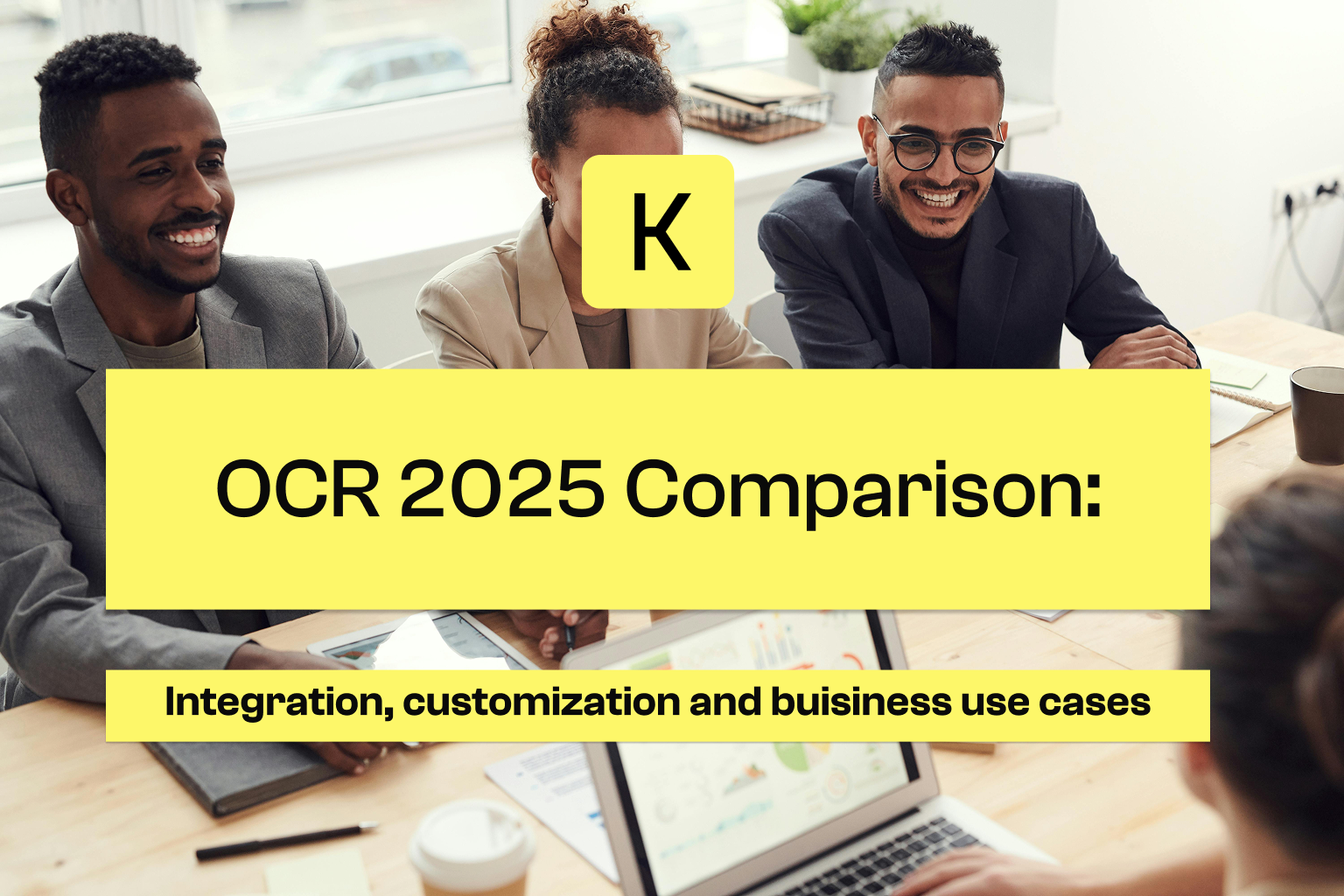.png)
How to Accurately Classify Documents with Intelligent OCR? A Concrete Use Case on ID Documents
Case study
Last update:
April 17, 2025
5 minutes
In this article, we are going to compare several OCR solutions based on artificial intelligence. We'll start with an overview of Klippa DocHorizon and then go over its main alternatives including Veryfi, Tesseract, Kofax OmniPage, and Koncile. These tools make it possible to automatically extract data from images or documents and convert them into structured formats that can be used by computer systems.
Complete comparison of the best OCR solutions: Performances, use cases, prices.

Klippa DocHorizon is an Intelligent Document Processing (IDP) solution that combines OCR and artificial intelligence. It makes it possible to scan, extract, anonymize, anonymize, classify and verify data from documents. Available on the cloud (or on site), it is aimed at various sectors such as accounting, finance, legal or even logistics.
You can submit documents via email, web, or mobile app. It would save up to 90% in processing time and up to 60% in budget.
Main features:
💵 Pricing: Monthly subscription adjusted according to volume. The higher the volume, the lower the unit price.

Veryfi is an OCR solution specialized in the transformation of unstructured documents (receipts, invoices, purchase orders) into structured data. Its main objective is to drastically reduce manual entry while limiting human errors.
The tool offers a powerful API that works in real time, with support for non-Latin alphabets and integrated document storage. It is particularly used in the fields of commerce, logistics or mass distribution.
The interface is simple, modern and easy to integrate.
Main features:
💵 Pricing: Startup license starting at $500/month, with a free trial. Customized pricing for businesses.

Tesseract is an open source OCR engine originally developed by Hewlett-Packard, now maintained by the community and supported by Google. It is a free and robust solution, ideal for technical projects that require an OCR engine to be integrated into a custom pipeline.
Tesseract is effective for reading printed text (including non-Latin alphabets) but does not offer any interface or turnkey services. It requires manual configuration and a suitable execution environment.
It is used in productivity projects, office applications, or embedded systems.
💵 Pricing: Free — under an open source license. Requires internal development resources

Kofax OmniPage is a commercial OCR solution designed for large-scale automation of document conversion, especially complex PDFs. It is recognized for its ability to manage large volumes and to extract tables and rows of items.
The solution works with over 120 languages, can be connected to a wide variety of scanners (mobile, desktop, multi-function) and allows access to documents on any device.
It is used in the banking, marketing or consumer goods sectors.
💵 Pricing: Single license at $499 (Ultimate version) with free trial.

Koncile is an intelligent OCR solution specialized in extracting accurate data from complex documents such as contracts, pay slips, status reports, or transport documents.
The tool allows line-by-line analysis, the management of various layouts and the targeted extraction of specific fields (dates, amounts, references, etc.). Thanks to its AI engine and its integrable API, Koncile adapts to all types of scanned documents, PDFs or images, even of low quality.
It is particularly popular in the real estate, transport, finance and legal sectors.
💵 Pricing: Billing on a per use basis or by subscription depending on the volume. Attractive discounted rates available. Direct API contact and personalized support included.
🎯 Do you want to test for yourself?
Discover the precision and flexibility of Koncile OCR on your own documents.
👉 Create your free demo account in 1 click
Let's discover together what Klippa DocHorizon offers, then see how his alternatives are positioned compared to him.
Resources
.png)
How to Accurately Classify Documents with Intelligent OCR? A Concrete Use Case on ID Documents
Case study

Compare 4 OCRs according to your business uses, types of documents, API integration, customization and business logic.
Blog
.png)
Automating KYC means fewer errors, faster processing, and stronger compliance. Discover how intelligent document processing is transforming identity verification in the most demanding industries.
Blog